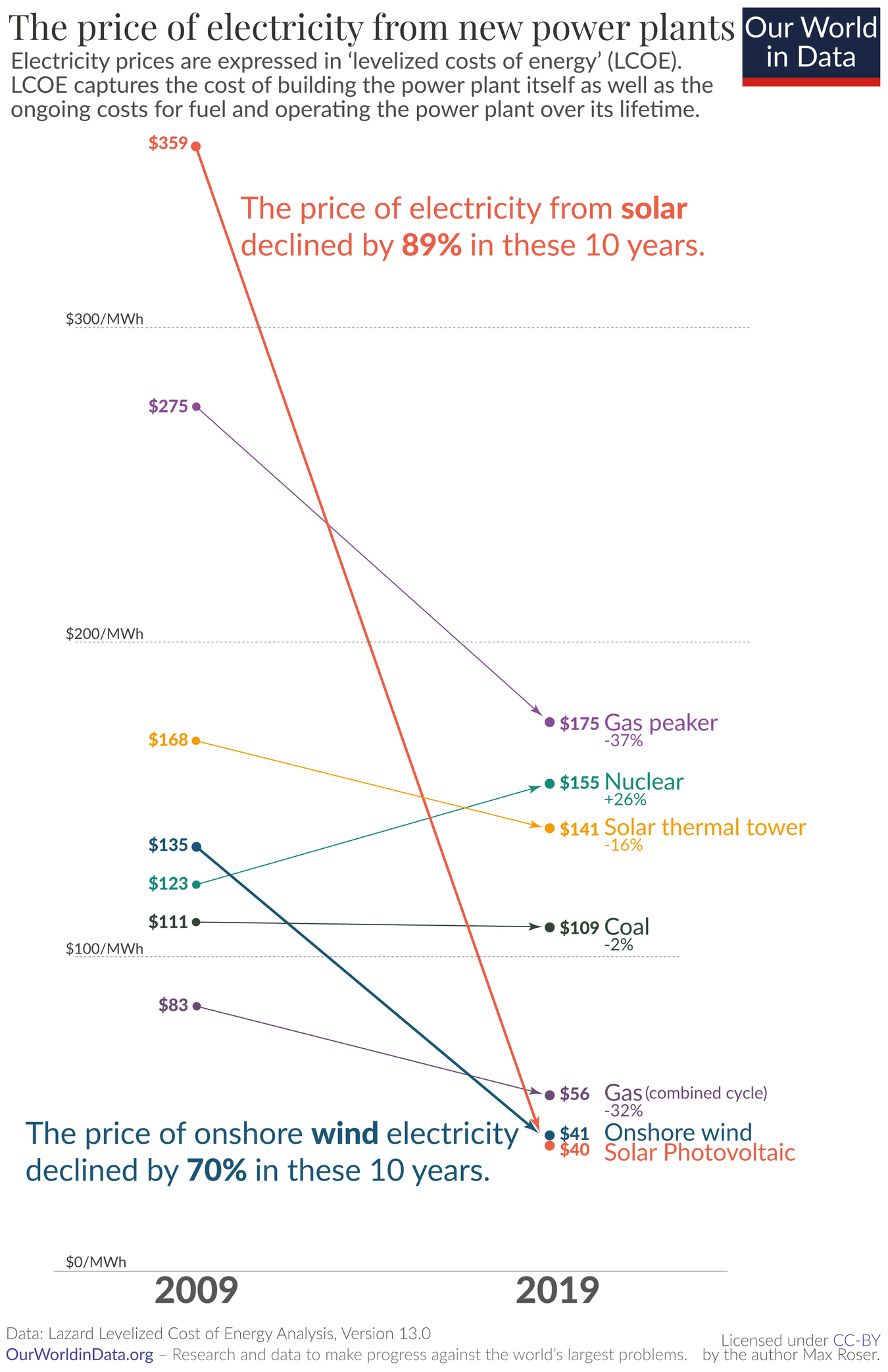The article, and their sources for cost analysis, don't appear to say, but how long is the lifespan of the production infrastructure? This detail is often left off these kinds of graphics and I have found that many articles pick 20 years as the lifespan, since that is the typical lifespan of common solar panels (not saying that can't last longer, but 20 years is a nice easy number). This becomes problematic when leveling cost against nuclear, where the plants a built to run 50 years and often run longer. Fossil fuels to a similar extent with many running long past 50 years. Nuclear takes a long time to become profitable, around 15 years typically. Not a problem in a 50-65 year cost analysis, but certainly a problem in a 20 year scenario. Unfortunately, 20 year cost analysis are common and if the article doesn't say what their timeline is, that is usually the case.
this post was submitted on 18 Nov 2023
20 points (100.0% liked)
Environnement
505 readers
8 users here now
Parler de l'environnement en français: changement climatique, empreinte carbone, extinction de masse, etc.
Les posts avec ⚠️ sont plus difficiles à regarder à cause de l'information qu'ils contiennent.
founded 2 years ago
MODERATORS
good point but with solar u dont get, 'solar' waste and an obligation to build a facility to store this waste. Also nuclear is finite: u always have to displace indigens and lead wars to get the material. With solar, u only need silicium, among other common materials
